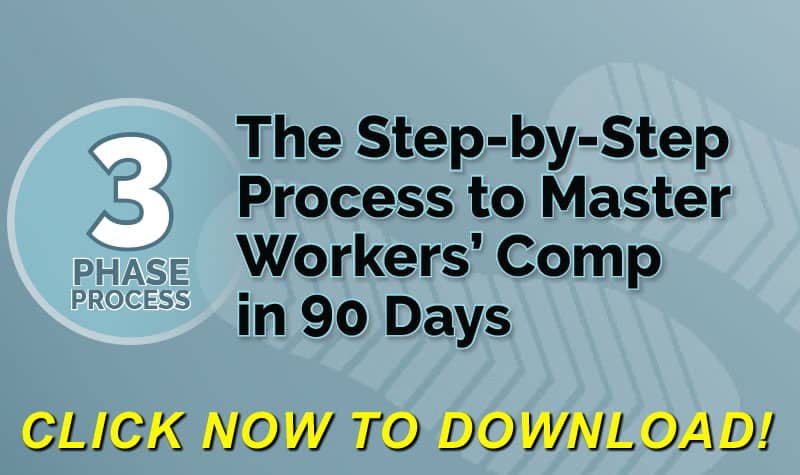Workers Compensation Diary of a Consulting Project –I will share some of my experiences from a work comp cost reduction consulting project. My goal is to advise the company about ways to reduce their overall workers' comp costs. The Importance of Visiting the Third-Party Administrator It's been my experience consulting projects work best and are most productive when they proceed in an orderly, logical way. Most workers' compensation assessments follow a predictable pattern. However, every now and then there is the one client/employer whose business and needs don't fit into a neat little box. Consideration must then be given to the "special" or "unusual" nature of the client's particular business and needs. Such was the case of a mid-western trucking enterprise. The company, incorporated in one state, has employees carrying on job duties nationwide. That is to say, the employees don't have a "place" or "site" to report to work. This becomes significant later on, as you will see. Observing How the Medical and Indemnity Claims Are Handled My first action of any consulting engagement is a visit to the third-party administrator (TPA) to dig for "soft spots" and observe and let each party touching the claim educate me about what they do, how the claim is handled, any problems they have with the employer, and problems they have with the employees, why claimants seem to retain an attorney, what resources they need to better handle the claim, what resources they currently are using. Think of it as "job shadowing." I call it "sitting chair-side." I always suggest visiting the TPA because invariably when I work with a risk manager to help reduce workers' comp costs, the RM has not visited the TPA offices with a fresh eye in quite some time. My role is to take a fresh look at the system in place to spot opportunities for improvement. Here are some things I observed: 1. An opportunity to improve the intake process by adding medical input to the process. 2. There were two companies at the TPA doing intake totally differently. The adjuster mentioned that another client was using another technique, and my company could possibly do this also. 3. The client is doing intake without medical triage. But, I don't jump to conclusions thinking it is a problem until my medical advisor reviews the files to see how they are being handled from a medical perspective; whether medical triage would be helpful or necessary. 4. The claims are reported by the employer to a vendor who reports the claims to the carrier. 5. The claim office manager initially evaluates the claim and then hands it off so administration can begin. 6. Administration reviews the initial details (zip code, confirms policy coverage, determines whether the employee is out of work) and assigns the claim a claim number and passes it to the appropriate adjuster (either medical-only or lost time). What it Means To Be "Site-Less" Although the employer is physically located in only one state, the injury took place in a different state, meaning the claim must be handled according to state law where the employee resides. Multiply that by 15 or 16 states where employees actually live, and you begin to see how complicated things can become. As I sit "chair-side" with the adjuster, I observe how lost time claims are handled and question whether it is impossible to have a return-to-work (RTW) program on site, since there is no "site" for the employees to participate in modified duty. A major challenge is discovered and thus, we must look for other options for injured employees, depending upon their skill sets and how these skill sets might transfer to modified duty. Med-Legal Meetings– As I sit with the adjuster I learn that in the state I am visiting, regulations permit a meeting between the defense counsel and the claimant's treating doctor to "get to the bottom" of medical discrepancies. Interesting. I will explore whether the attorney can be prepped by an MD. This visit is allowed prior to depositions and/or hearings, but is apparently generally used in the later stages of a claim. Options to enhance this meeting are worth exploring, and I begin by getting the regulations and calling the local attorney to introduce myself. Return-to-Work programs are a key and essential part of reducing costs and I am NOT prepared to consider the option of leaving employees out of work indefinitely because they lose motivation, become depressed, healing takes longer, and as they lose their daily routine they become isolated from the workforce. There are many other benefits also, but we can't do into all of there here. They are all listed in Workers' Comp Kit modules www.ReduceYourWorkersComp.com. This employer does not want a light duty program, and I will turn over every stone looking for other options. I may eventually suggest these options for the no-site nature of this employer: 1. Structured Volunteering. Perhaps at a school, hospital, Goodwill Industries or senior center. 2. Telecommuting from home via computer, doing home-based work. 3. Local network of work-hardening rehabilitation centers that simulate a work environment. Research Services – There are vendors providing both of these services. I have also asked the AE (account executive) from the TPA for copies of all brochures of all services the TPA offers and I am directed to their website. Hum. I would rather have hard copies I can mark up with my yellow highlighter. I put this issue on my list of "to-do" items for future follow up, then start researching the two intake triage companies I have just learned about. My logic has nothing to do with the economics. Well, OK, maybe it does a little bit, but primarily I want the employees back to work because staying out of work isn't good for them personally or their families. Anyone who works, knows that they have a pattern, a routine that they live by; when that routine is gone, their life changes — for the worse usually. It's better to have a destination to go to each day. If they don't have a destination to go to each day, they often become depressed and isolated. So, we'll be looking for other options for injured employees of this company. (workersxzcompxzkit) While the substance of my findings are interesting, the important point I want to make is the offices of your TPA's must be visited at least once each year to learn, learn, learn about the claim process and establish a relationship with your partners at the TPA/claim administrator's offices. Author Robert Elliott, executive vice president, Amaxx Risks Solutions, Inc. has worked successfully for 20 years with many industries to reduce Workers' Compensation costs, including airlines, health care, manufacturing, printing/publishing, pharmaceuticals, retail, hospitality and manufacturing. He can be contacted at: Robert_Elliott@ReduceYourWorkersComp.com or 860-786-8286.
Visit Our Websites: WC Calculator: www.reduceyourworkerscomp.com/calculator.php TD Calculator:.ReduceYourWorkersComp.com/transitional-duty-cost-calculator.php WC 101: www.ReduceYourWorkersComp.com/workers_comp.php
Do not use this information without independent verification. All state laws vary.
©2008 Amaxx Risk Solutions, Inc. All rights reserved under International Copyright Law. If you would like permission to reprint this material, contact Info@WorkersCompKit.com















